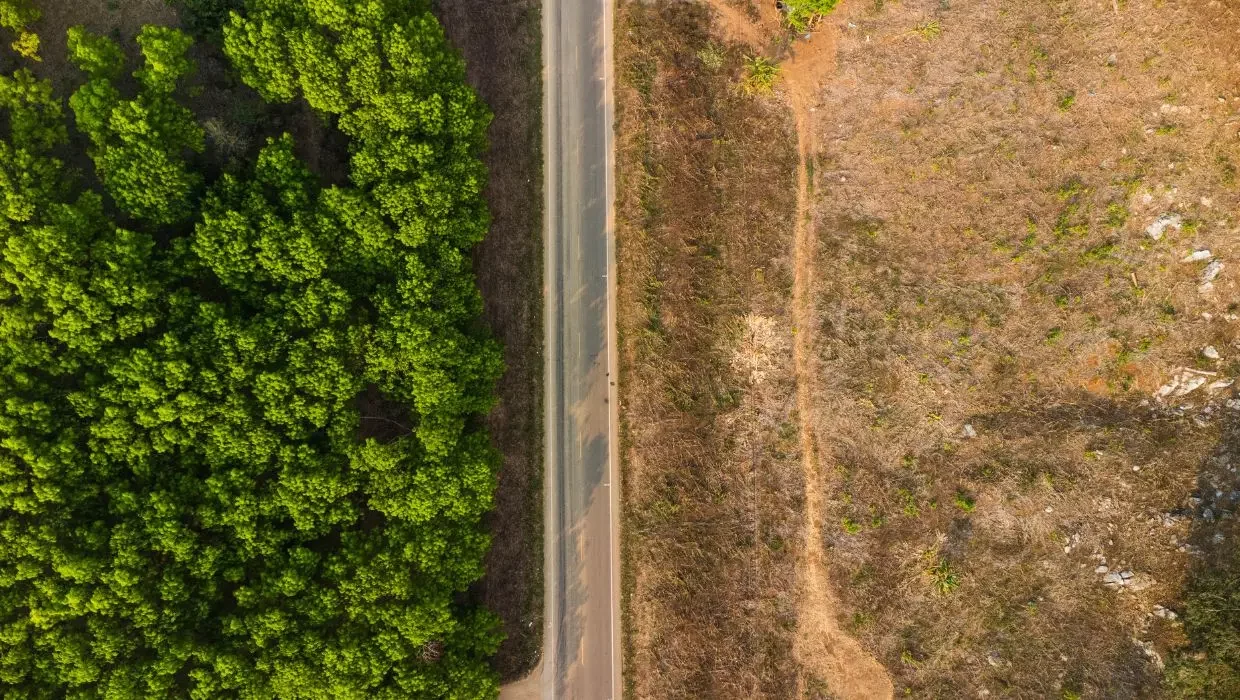‘Carbon literacy’ is increasing in search volume in Google, year on year, but what exactly does it mean?
Carbon literacy refers to an individual’s understanding of climate change, its impact, and how to mitigate it. The Carbon Literacy Project (CLP) has over a decade of experience in climate change education helping people expand their climate knowledge. The project aims to enhance this understanding, to certify people as ‘carbon literate’. The CLP is a Manchester-based organisation that acts as a body to promote and oversee the provision of carbon literacy training.
Palatine Private Equity LLP, a partner-led private equity firm, offered carbon literacy training sessions covering different aspects of climate change: its science, its impact on social equity, the action required to fight it, and communication strategies to encourage people to act.
Climate change education is still necessary despite increased public awareness. Very few individuals can accurately answer how much the Earth has warmed since the start of the industrial revolution – the average answer given was 2.5°C, versus the reality of 1.1°C.
There is also a misunderstanding around the sector which contributes most to global warming, with almost a quarter of school leavers selecting transport, when in fact industry, electricity and heat production comes first.
Sophia Reeve, Ecus’s Sustainability Consultant, and Cura Terrae’s Content Manager, Roisin Campbell, completed carbon literacy training with The Carbon Literacy Project, delivered by Palatine Private Equity. Palatine has an established partnership with the Carbon Literacy Project highlighting their commitment to sustainable investing; Cura Terrae is backed by investment from Palatine Private Equity’s Impact Fund, which aims to generate returns with purpose.
What did you find surprising?
Roisin – I hadn’t appreciated just how bespoke the journey to net zero will be for each organisation – each needs a tailored approach. There are so many different ways to go about reducing emissions and the training highlighted many of them, from the highly obvious to the highly creative.
Additionally, the training introduced me to one of the most striking visualisations of climate change and biodiversity loss that I have seen – the climate stripes and biodiversity loss stripes.*
The climate stripes were developed by Professor Ed Hawkins at the University of Reading in 2018 and show clearly and vividly how global average temperatures have risen over nearly two centuries. Each stripe represents the average temperature for a single year, relative to the average temperature over the period. Shades of blue indicate cooler-than-average years, while red shows years that were hotter than average. The stark band of deep red stripes on the right-hand side of the graphic show the rapid heating of our planet in recent decades. I believe this really helps with understanding the scale of the challenge we are facing.
Sophia – What surprised me was our “carbon confessions” – it is easy to experience guilt that can come with working in the sustainability industry and expectations to live life sustainably and in a low carbon manner. There was reassurance in everyone acknowledging this and sharing this in a safe space. How much further we need to go hit home for us – we discussed how much carbon have we removed from the atmosphere and how much do we need to remove to reach net zero.
Have any misconceptions been cleared up for you?
Sophia – The day’s training highlighted the importance of carbon reduction, but also carbon removal – we cannot just reduce our carbon emissions, we must also work to remove it, preferably with nature-based carbon removal solutions such as the regeneration of woodland and restoration of peatland.
Carbon removal matters because somewhere between 15–40% of the carbon dioxide that humanity emits will remain in the atmosphere for up to a thousand years, with roughly 10– 25% of it persisting for tens of thousands of years. Removing and sequestering that carbon dioxide could permanently reduce climate risk by slowing or even reversing climate change. (American.edu)
Are you going to do anything differently?
Sophia – I think from this point onwards, we will be taking every opportunity to share the knowledge we have gained with others in our organisation and encourage them to be increasingly aware of the smaller choices that they make, as when added up they have a large organisational impact.
Have you been motivated?
Roisin – Climate change impacts are at our doorstep, but we’ve seen some amazing examples of individuals and organisations – trailblazers – using creative means to get to zero emissions, and vast amounts of people are beginning to make the lifestyle changes that will be massively impactful in the long term. We feel more empowered to generate change.
What value is there to business from becoming carbon-savvy?
Aside from helping the environment, reducing carbon emissions can support businesses in numerous ways. These benefits include:
- Enhanced business reputation, as customers are increasingly expecting organisations to take actions to operate ethically which involves taking steps to reduce their emissions.
- Reducing costs – whether this is by swapping to renewable energy tariffs, installing solar panels, or switching to electric vehicles. The ability to identify cost savings through energy efficiency by measuring and managing the carbon footprint, allows companies to identify hotspot areas where they can reduce energy consumption, such as upgrading equipment or implementing energy-efficient processes.
- Attracting investment – investors and shareholders increasingly look for companies with a long-term sustainably strategy, including those who may be less reliant upon fossil fuels.
- Enhanced resilience – protecting your business against market disruptions can avoid disruption from increased costs from fossil fuels and disruptions to fuel supply chains, as well as increases in the cost of energy. It also helps to manage future risks by future-proof your business long term.
- Attracting and retaining staff by conducting the business in a way that operates socially responsible.
- Become a stronger contender for contracts as a sustainable culture in a tender situation may be the deciding factor in getting a contract or not.
Are there benefits to staff?
- Increased environmental awareness – carbon literacy training provides employees with a more in-depth understanding of climate change and carbon reduction strategies. This can help staff make more informed environmental decisions both in and outside of the workplace.
- Professional development – carbon literacy training gives employees an official accreditation as ‘Carbon Literate’. This can help staff develop valuable skills in environmental stewardship whilst receiving professional and respected training.
- Team and individual sense of purpose – carbon literacy training can increase staff moral and teamwork helping create a shared sense of responsibility for environmental action. The training can help staff fulfilment as they contribute positive action towards sustainability.
How can I/my organisation become “carbon literate”?
Other than taking Carbon Literacy training, business will need to do more outside of this to consolidate understanding and put what is learned into practice, to really reap the benefits of the training.
Carbon literacy goes beyond just teaching climate change science and focuses on increasing awareness of the carbon dioxide costs and impacts of everyday activities, as well generating motivation to reduce emissions on an individual, community and organisational basis.
Consider engaging staff with environmental and social initiatives through launching a sustainability committee – staff facing meeting to share their concerns with current operations/business practices that negatively impact the environment and any ways they can identify to do things differently to improve impacts.
Importance of close collaboration
Collaborative action is vital for our future and crucial in the fight against climate change.
When organisations come together to share how they are minimising their own carbon emissions, it allows us to pick up different tools and techniques that we wouldn’t otherwise consider. This collaboration can also allow us to identify shared pain points – difficulty in collecting data across a health and safety system, water and electricity bills, waste manifests, a desktop, or an HR system.
Encouraging knowledge sharing between organisations will be critical to accelerate the development of more carbon efficient technologies.
Close collaboration also allows comparison between organisations and businesses in terms of how far advanced they are on their journey to net zero – this can give an organisation a better idea of how their sector is performing and whether they have (or could develop) a competitive advantage, or whether they are lagging behind with their green credentials and missing opportunities, as demand for climate-responsible service providers trickles through supply chains.
*biodiversitystripes.info UK stripes use public sector information from Defra, UK, Biodiversity Indicators 2021, licenced under the Open Government Licence v3.0




